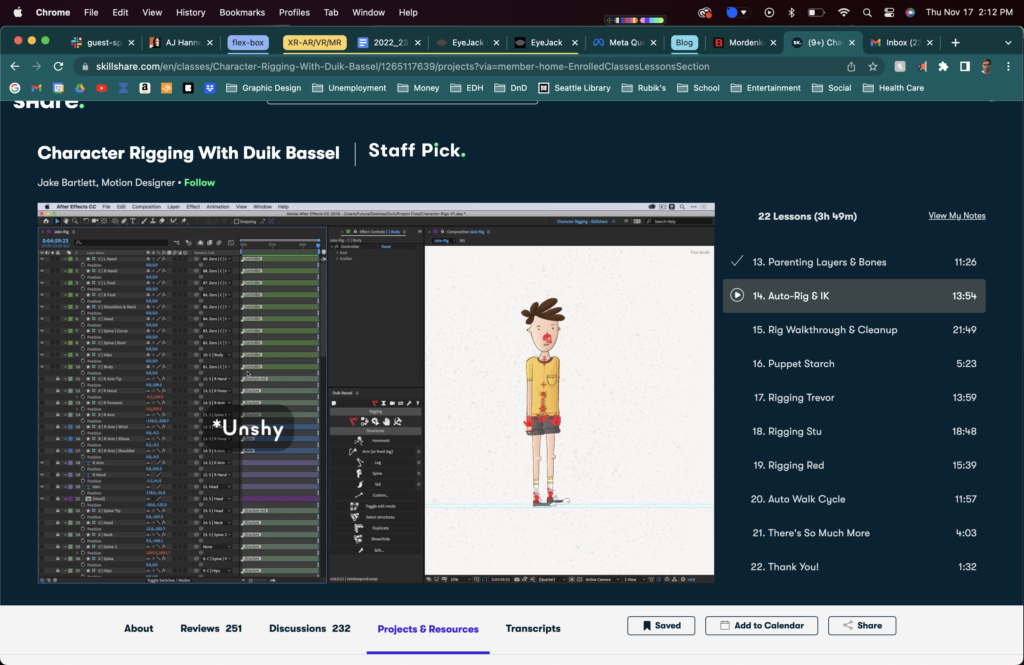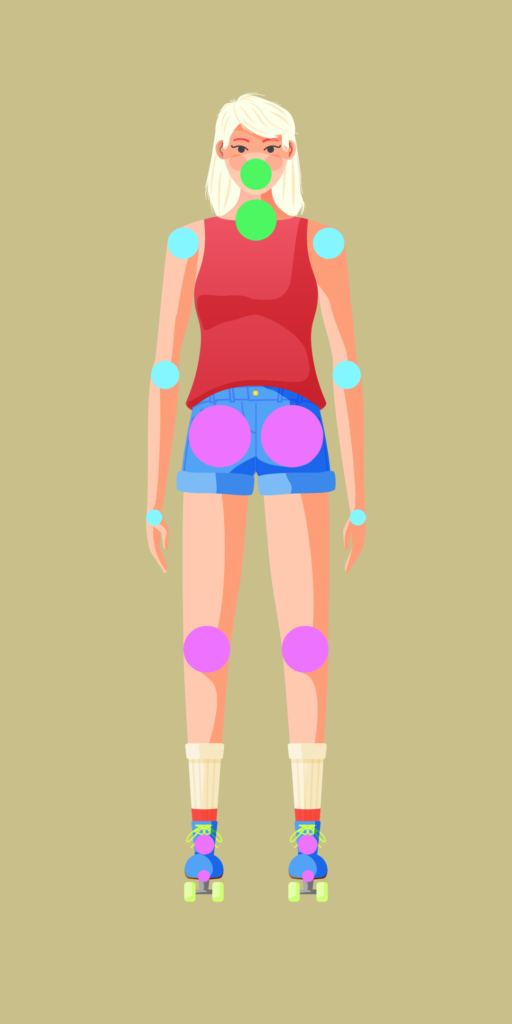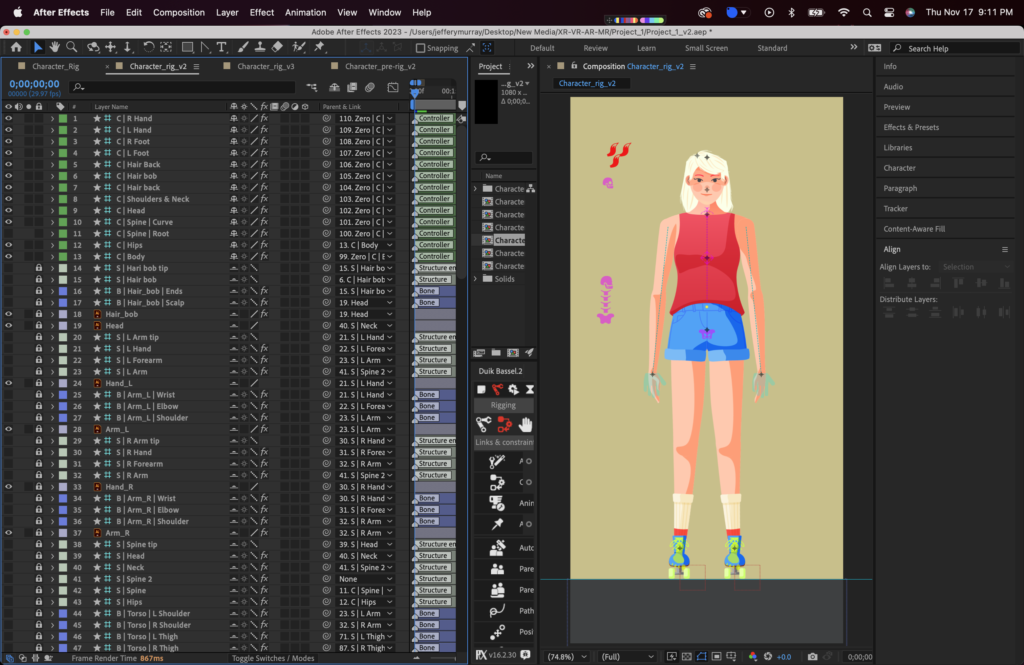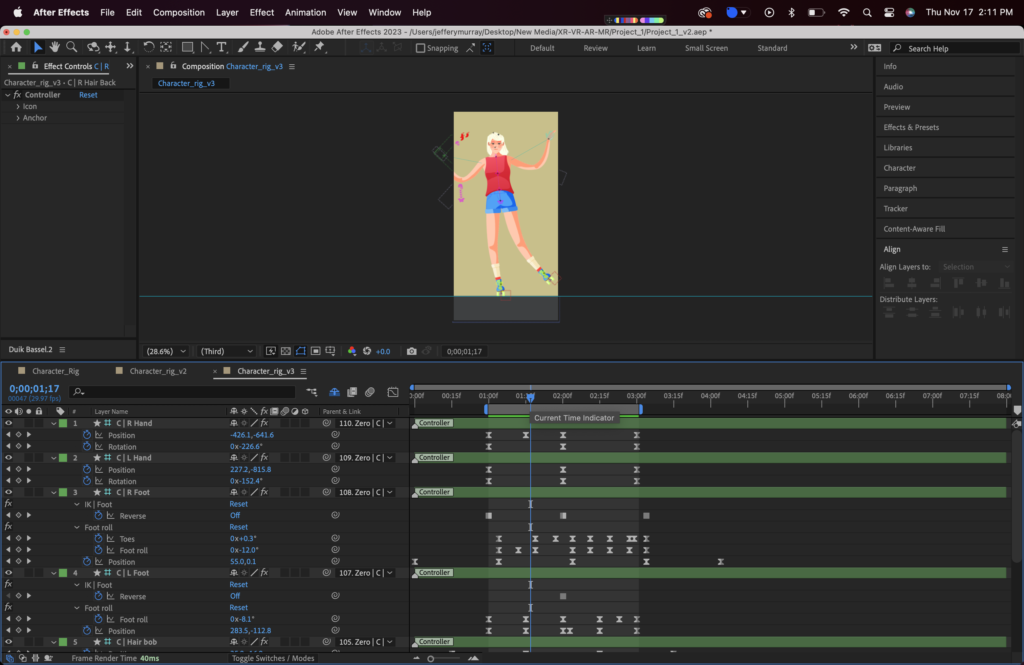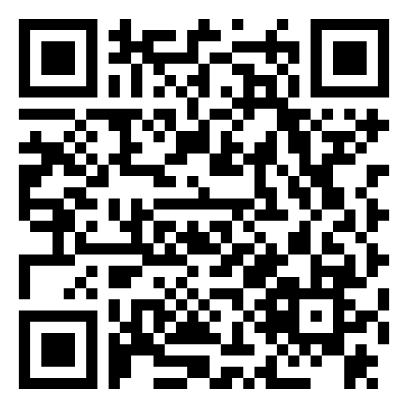The first five to six weeks of classes have been a lot (mostly in a good way). I was in Erik’s After Effects class during the first half of this quarter and ended up learning more than I expected, having worked with the program for years for work and my own personal amusement.
In the first two weeks of class we covered motion graphics, which is primarily what I’ve used After Effects for in the past. I’ll be honest, in the first two weeks I had prior knowledge of pretty much everything that we covered. I love making my logos and graphics move, fine tuning and making everything fluid and perfect. I used this time to finish animating a logo I had started for personal use earlier in the year and had lost steam on. I was super happy with the end result.
It was once we started working with masks, green screen, and compositing that I really started learning some of the tricks and tools I was less familiar with in After Effects. For the most part they were features I was aware of, but had very little practical experience with.
When it came to masking I knew you could create a mask and make it move, but I never really understood how or why it would be useful. It wasn’t a technique I ever used or could get to work the ways I wanted it to when creating logos and other animations. The concept makes a lot of sense to me now and I know I’ll feel a lot more comfortable if I ever find myself in a situation where I am working with and having my animations interact with video.
Green screen was also something I had very little experience with. I had used the method once while working on a project for a job, but had not had a reason to revisit it. Again, I feel much more comfortable with it now and feel like I could use it in a professional setting if the need arose. While learning green screen, I gave myself the extra challenge of learning how to use After Effects’ built in tracking features, something I knew was possible, but hadn’t really used before. Erik saw me exploring the tool after class one day and walked me through the tool and some of the best ways and situations where I could use it.
The last thing we covered was compositing, which I only knew about though photoshop and blend modes. I definitely struggled with this more than the previous weeks’ assignments. I initially was trying to use compositing as a substitute for green screen, which I now know is the wrong perspective, at least at the level we were using it. It wasn’t until I realized that that I began to understand which situations and video elements allow the technique to meet its full potential. Compositing is something I would very much like to dive deeper into and learn how and where I can use it to add new dimensions to my work.
